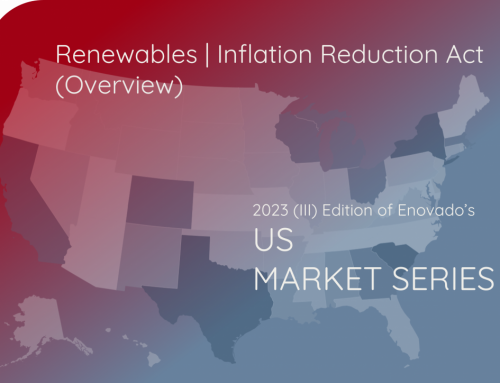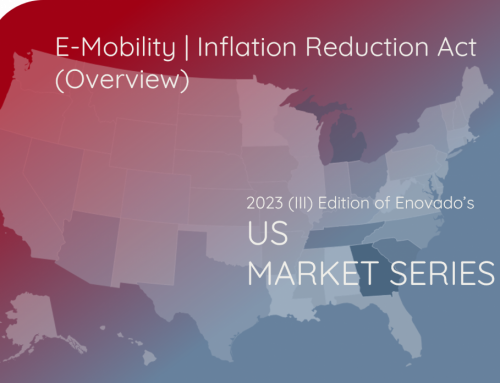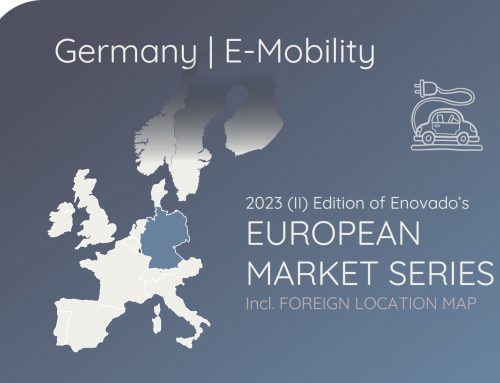Since Andrés Manuel López Obrador (AMLO) announced his candidacy for the presidency of Mexico, there have been many speculations about Foreign Direct Investment (FDI) and the image of Mexico projected in the world. During his campaign, he announced the intention to make drastic changes in the way the country was attracting Foreign Investment. One example was the announcement made on September 2018 about removing the Pro Mexico offices which, so far, have been the official promotion agency for both the FDI attraction and the positioning of Mexican companies and products in global markets. Another example was the cancellation of the construction of the new airport in Texcoco made last October 2018. This new construction, apart from being a necessity for the already saturated airport, was going to provide the conditions that a country with the size, population and economic importance of Mexico has, to cover the current demand and considering future growth. Moreover, it was going to be one of the most avant-garde airports in the world.
Now that AMLO has been governing Mexico for the last 3 months, and that both the disappearance of Pro Mexico and blocking the construction of the Texcoco airport are already a fact, uncertainty is one of the greatest risks in domestic and foreign policy. And in the past months, the President has only added more contradictory statements. On one hand, he declared that for questions of sovereignty, the participation of foreign investments will not be welcomed while, on the other hand, he also affirmed that FDI for 2019 will double the amount reached in 2018 ($32 billion). This figure reached in the previous year leaves Mexico out of the top 10 countries that received more flows from abroad according to the UNCTAD (The United Nations Conference on Trade and Development). The UNCTAD report mentioned that the number of resources that entered Mexico remained above those captured in 2017, (more than $29 billion). It seems that global investors returned to reassurance after the trilateral agreement of North America between Mexico, the United States, and Canada.
Apparently, Mexico has also been dragged down by a global trend. During 2018, according to the Monitor of Trends in Global Investment, the contraction of Foreign Direct Investment decreased by 19%, explained as a result of the fiscal reforms that Mr. Trump’s government structured and that relate to incentivizing protectionism and to foster the North American internal market.
What would the dissolution of Pro Mexico look like? The Secretariats of Economy and Foreign Affairs signed a Collaboration Agreement for the transfer of functions of promotion of exports and attraction of Foreign Direct Investment (FDI) from the Pro Mexico offices to the embassies (Pro Mexico operated 46 international offices in cities such as New York, Los Angeles, London, Madrid, Moscow, and Shanghai, plus the central offices of Mexico City – where nearly 200 employees worked – and 28 offices within the Republic). An annual work plan will be defined, and the Mexican Foreign Service will be designated to carry out the economic and commercial promotion tasks in embassies and key consulates. Pro Mexico attracted investments of $87,932 million dollars and promoted the creation of more than 316,000 jobs from 2013 to 2018, according to data from its website. In addition, it promoted 5,028 export projects worth $18,051 million and focused on industries such as energy and environmental technologies, health, infrastructure, tourism, consumer goods, and transport, among others.
In addition, both agencies Pro Mexico & the embassies will exchange information, through digital platforms, on business opportunities gathered by embassies, consulates, and central offices. Finally, support will be provided to economic missions on the federal, state and local governments, as well as to business and industrial organizations that may require it. It will be important to observe the evolution of this new mechanism during the first year of operation because it is still uncertain if this could directly affect the levels of foreign investment. At the beginning it may cause some misunderstanding for those interested in obtaining information about Mexico, however, the transfer of activities should be performed in the appropriate manner with good communication and advice both internally and towards users, hoping that this new way of working should not imply any obstacle for those seeking to invest in Mexico.
And what about the new airport? For the time being, the same companies that won the contracts to build the Texcoco airport will be the ones working for the construction of the Santa Lucía airport in Mexico City. According to the Ministry of Communications and Transportation, more than $5 billion have already been invested in the Texcoco airport and $8.75 billion have been contracted. The Ministry estimates that the cost of canceling the Texcoco airport would reach $3 billion for the executed work and more than $2 billion for inputs already acquired. And while the new President proposes to maintain a simultaneous operation between the current airport and the Santa Lucia airport, the feasibility of this resolution is questionable. Experts have already given their approval to this proposal; however, we will know the capabilities once they are both operating, hoping that growth expectations are met.
In short, today it seems that the credibility of Mexico for attracting investment, generating employment and business opportunities is in doubt, without delving into the skepticism that some nationals and foreigners feel against this government. It is essential to bear in mind that Mexico went from being the fifth destination in 2016 to be the third in 2018 among the most attractive FDI destinations, with the lowest rate of unemployment in 10 years being only 3.4% in 2017 and poverty levels constantly decreasing (1% annual average). Although none of the statements and actions of the current government provides us with a firm idea about the strategy to attract FDI and keep Mexico in its current position as an attractive destination. It is essential to avoid projecting an image of Mexico based on contradictory statements or weakly understandable actions. Mexico should trust in the structure already created and developed by the states Like Nuevo Leon, Jalisco, San Luis Potosi or Queretaro that have worldwide recognition as excellent destinations for FDI, and for its impact on export levels and promotion in the development of sectors such as automotive, aerospace, pharmaceutical and agro-industry.
According to PWC’s “The World in 2050”, Mexico is projected to be the seventh biggest world economy by 2050. In addition to stable finances, its constant modernization, an open economy with the 12 FTAs, Mexico potentiates all the benefits of its geographical location and diversity of ecosystems to achieve this goal.
According to PWC’s “The World in 2050”, Mexico is projected to be the seventh biggest world economy by 2050. In addition to stable finances, its constant modernization, an open economy with the 12 FTAs, Mexico potentiates all the benefits of its geographical location and diversity of ecosystems to achieve this goal. Mexico should not lose the momentum to keep on attracting foreign companies to its soil. Only with time, we will see if the Embassies and Secretariats can perform as well as Pro Mexico when convincing firms to make the investment.



